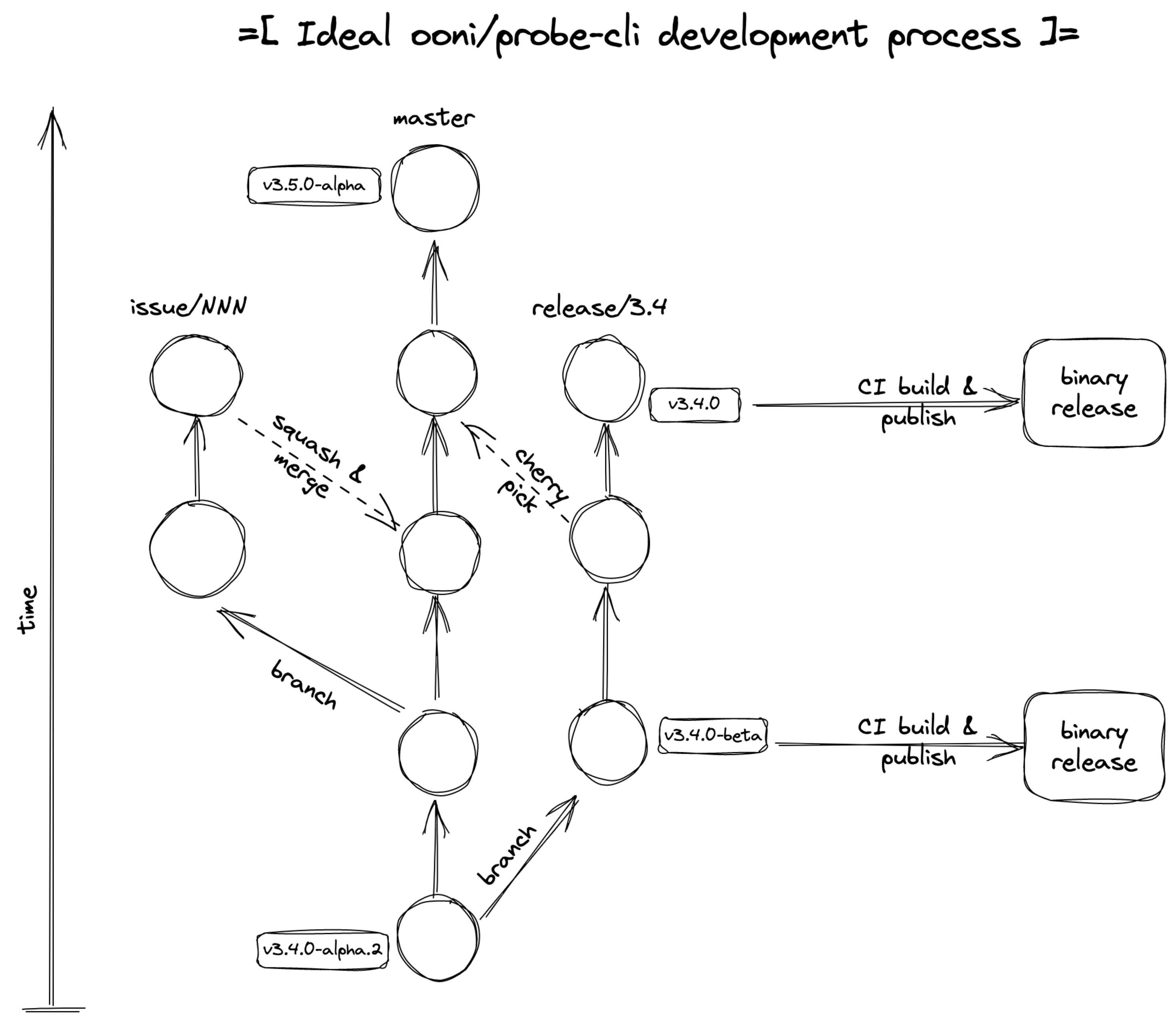6.7 KiB
Contributing to ooni/probe-cli
This is an open source project, and contributions are welcome! You are welcome to open pull requests. An open pull request will be reviewed by a core developer. The review may request you to apply changes. Once the assigned reviewer is satisfied, they will merge the pull request.
OONI Software Development Guidelines
Please, make sure you read OONI Software Development Guidelines. We try in general to follow these guidelines when working on ooni/probe-cli. In the unlikely case where those guidelines conflict with this document, this document will take precedence.
Golang Resources
We use golang as our primary language for the development of OONI Probe CLI and do check out the resources below, quite useful to read before contributing.
Opening issues
Please, before opening a new issue, check whether the issue or feature request you want us to consider has not already been reported by someone else. The issue tracker is at github.com/ooni/probe/issues.
PR requirements
Every pull request that introduces new functionality should feature comprehensive test coverage. Any pull request that modifies existing functionality should pass existing tests. What's more, any new pull request that modifies existing functionality should not decrease the existing code coverage.
Long-running tests should be skipped when running tests in short mode
using go test -short. We prefer internal testing to external
testing. We generally have a file called foo_test.go with tests
for every foo.go file. Sometimes we separate long running
integration tests in a foo_integration_test.go file.
If there is a top-level DESIGN.md document, make sure such document is kept in sync with code changes you have applied.
Do not submit large PRs. A reviewer can best service your PR if the code changes are around 200-600 lines. (It is okay to add more changes afterwards, if the reviewer asks you to do more work; the key point here is that the PR should be reasonably sized when the review starts.)
In this vein, we'd rather structure a complex issue as a sequence of small PRs, than have a single large PR address it all.
As a general rule, a PR is reviewed by reading the whole diff. Let us know if you want us to read each diff individually, if you think that's functional to better understand your changes.
Code style requirements
Please, use go fmt, go vet, and golint to check your code
contribution before submitting a pull request. Make sure your code
is documented. At the minimum document all the exported symbols.
Make sure you commit go.mod and go.sum changes. Make sure you
run go mod tidy to minimize such changes.
Implementation requirements
-
use
./internal/atomicxrather thanatomic/sync -
do not use
os/exec, usex/sys/execabsor./internal/shellx -
use
./internal/fsx.OpenFilewhen you need to open a file -
use
./internal/netxlite.ReadAllContextinstead ofio.ReadAlland./internal/netxlite.CopyContextinstead ofio.Copy -
use
./internal/model.ErrorToStringOrOKwhen an experiment logs intermediate results
Code testing requirements
Make sure all tests pass with go test -race ./... run from the
top-level directory of this repository. (Integration tests may be
flaky, so there may be some failures here and and there; we know
in particular that ./internal/cmd/jafar is one of the usual
suspects and that it's not super pleasant to test it under Linux.)
Writing a new OONI experiment
When you are implementing a new experiment (aka nettest), make sure you have read the relevant spec from the ooni/spec repository. If the spec is missing, please help the pull request reviewer to create it. If the spec is not clear, please let us know during the review.
To get a sense of what we expect from an experiment, see the internal/tutorial tutorial
Branching and releasing
The following diagram illustrates the overall branching and releasing strategy loosely followed by the core team. If you are an external contributor, you generally only care about the development part, which is on the left-hand side of the diagram.
Development uses the master branch. When we need to implement a
feature or fix a bug, we branch off of the master branch. We squash
and merge to include a feature or fix branch back into master.
We periodically tag -alpha releases directly on master. The
semantics of such releases is that we reached a point where we have
features we would like to test using the miniooni research CLI
client. As part of these releases, we also update dependencies and
embedded assets. This process ensures that we perform better testing
of dependencies and assets as part of development.
The master branch and pull requests only run CI lightweight tests
that ensure the code still compiles, has good coverage, and we are
not introducing regressions in terms of the measurement engine.
To draft a release we branch off of master and create a release/x.y
branch where x is the major number and y is the minor number. For
release branches, we enable a very comprehensive set of tests that run
automatically with every commit. The purpose of a release branch is to
make sure all checks are green and hotfix bugs that we may discover
as part of more extensively testing a release candidate. Beta and stable
releases should occur on this branch. Subsequent patch releases should
also occur on this branch. We have one such branch for each x.y
release. If there are fixes on master that we want to backport, we
cherry-pick them into the release branch. Likewise, if we need to
forward port fixes, we cherry-pick them into master. When we backport,
the commit message should start with [backport]; when we forward
port, the commit message should start with [forwardport].
When we branch off release x.y from master, we also need to bump
the alpha version used by master.
We build binary packages for each tagged release. We will use external tools for publishing binaries to our Debian repository, Maven Central, etc.
Community Channels
Stuck somewhere or Have any questions? please join our Slack Channels or IRC. We're here to help and always available to discuss.
